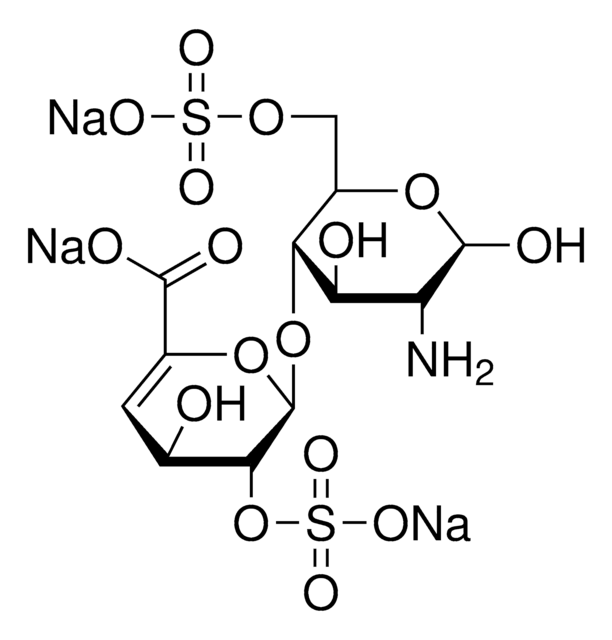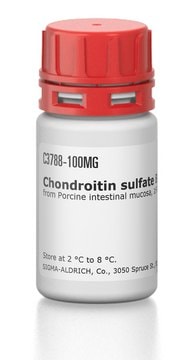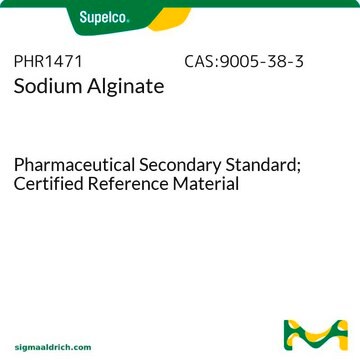H6512
Heparinase II from Flavobacterium heparinum
Lyophilized powder stabilized with approx. 25% bovine serum albumin, lyophilized powder, ≥100 units/mg protein (enzyme + BSA)
Sinónimos:
Heparin lyase II
About This Item
Productos recomendados
origen biológico
bacterial (Flavobacterium heparinum)
Nivel de calidad
conjugado
conjugate (Glucosaminoglycan)
formulario
lyophilized powder
actividad específica
≥100 units/mg protein (enzyme + BSA)
mol peso
84.1 kDa
temp. de almacenamiento
−20°C
Descripción general
Aplicación
- for digestion of heparin sulfate during exosome isolation
- for digestion of heparin sulfate in notochordal cell conditioned media (NCCM) to investigate the content of glycosaminoglycans in NCCM
- as a component of digestion buffer during cell surface glycan processing
- as a component of heparin lyase (HSase) mix to remove the heparin sulfate on the 293ͰT/ACE2 cell surface and study the effect of histones on the infectivity of pseudovirus
Acciones bioquímicas o fisiológicas
Definición de unidad
Otras notas
Código de clase de almacenamiento
11 - Combustible Solids
Clase de riesgo para el agua (WGK)
WGK 3
Punto de inflamabilidad (°F)
Not applicable
Punto de inflamabilidad (°C)
Not applicable
Equipo de protección personal
Eyeshields, Gloves, type N95 (US)
Certificados de análisis (COA)
Busque Certificados de análisis (COA) introduciendo el número de lote del producto. Los números de lote se encuentran en la etiqueta del producto después de las palabras «Lot» o «Batch»
¿Ya tiene este producto?
Encuentre la documentación para los productos que ha comprado recientemente en la Biblioteca de documentos.
Los clientes también vieron
Artículos
Uncover more about glycosaminoglycans and proteoglycans including the structure of glycosaminoglycans (GAGs), the different types of GAGs, and their functions.
Glycosaminoglycans are large linear polysaccharides constructed of repeating disaccharide units.
Nuestro equipo de científicos tiene experiencia en todas las áreas de investigación: Ciencias de la vida, Ciencia de los materiales, Síntesis química, Cromatografía, Analítica y muchas otras.
Póngase en contacto con el Servicio técnico













